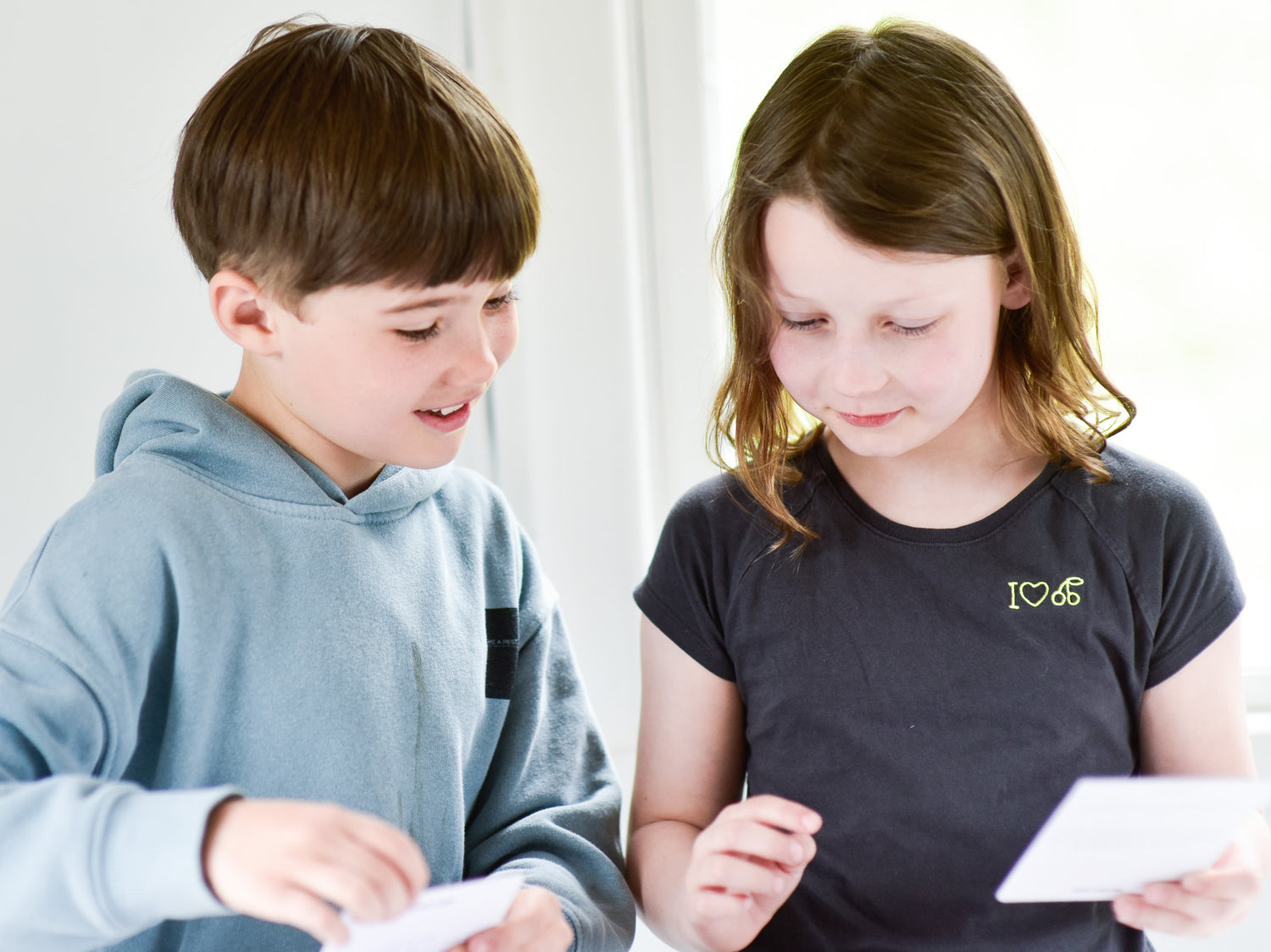How do I use the cards with my child?
Everyone uses the cards in different ways, which is part of the idea. There is no right or wrong way to use them.
Here are two examples:
1. Use them to understand what your child is experiencing. Place the cards on the table and let your child choose the card that best matches with their feelings or with how the day has felt. (Help read and explain if needed). Use the questions on the back of the cards to start the call.
2. Use the cards to learn how to create awareness of different emotions. Let your child choose a card random or what they are most curious about and use the questions on the back of the card. Or ignore the questions and talk freely about the word on the card.
Are not these feelings for complex for a young child?
We have deliberately included a combination of emotions, both known and unknown to younger children. The idea is to give the child an opportunity to become aware of more unknown feelings, in order to identify them once they show up. These feelings exist, even in our youngest children.
That being said, it is up to each adult to decide how to best use our cards, what to include to suit the individual's needs. All children are different and the use of the cards must be adapted accordingly.
The illustrations are difficult to understand
The illustrations are drawn in a way that arouses imagination and curiosity. They should create thoughts and thoughts - unique to each. Children have a tendency to see what is not always clear to us adults, and we hope to stimulate children's creativity through our illustrations.
We started as a fairy tale created by a child to explain emotions. Everything we do originated in that story. All our products are designed to portray our fairy tale, in one way or another. We let the characters of the fairy tale lead the way to emotional consciousness.
The questions are too hard for my child
The questions on the back of the cards are only intended as a guiding tool and should be adapted to your child's understanding and needs. Or be completely omitted if they are too difficult.
The cards are intended to be used several times and follow your children as they grow. Therefore, they are designed so that they remain valuable as the children get older and more conscious.
The idea is not that all questions should be relevant and answered at once, but that they are adapted to the course of life.
Do I have to start with step 1?
No, you should start at the level that your child benefits most from. Our products are divided into three categories of emotional development, but they are not designed in such a way that a category must be completed in order to move on to the next.
Aren't these emotions too complex for a young child?
We have deliberately included a combination of emotions, both known and unknown to younger children. The idea is to give the child an opportunity to become aware of more unknown feelings, in order to identify them once they show up. These feelings exist, even in our youngest children.
That being said, it is up to each adult to decide how to best use our cards, what to include to suit the individual's needs. All children are different and the use of the cards must be adapted accordingly.
The illustrations are difficult to understand
The illustrations are drawn in a way that arouses imagination and curiosity. They should create thoughts and thoughts - unique to each. Children have a tendency to see what is not always clear to us adults, and we hope to stimulate children's creativity through our illustrations.
We started as a fairy tale created by a child to explain emotions. Everything we do originated in that story. All our products are designed to portray our fairy tale, in one way or another. We let the characters of the fairy tale lead the way to emotional consciousness.
May my child have to be within the age limit?
No absolutely not. We specify a suitable starting age only as a guide and not as a rule. No child is the same and all children have different needs and understanding. It is up to every adult to decide whether or not their children are the right age.
We have encountered teenagers who use Emotion Cards 1 and four-year-olds who use Emotion Cards 2. We have adults who tell us that the cards are just as good for them. Have you ever verbalized how it feels within you to be sad? Not many of us have. Thus, there is also no upper age limit for building emotional consciousness.
Can't find the answer you are looking for?
Email us your question and we will hear from us as soon as we can!
Write to hello@bonkistudio.com


